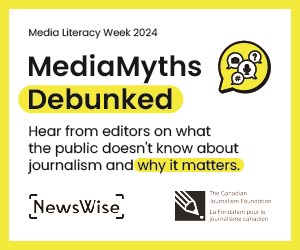There was a favourite chew toy my dog once had.
It was a rubber rolled up newspaper with a headline embossed on it which read “Man Bites Dog.”
This was about 15 years ago, and it was a nice little humorous fake news touch which we all thought perfect for such a toy. We all understood it to be humorous. We all understood it to be a fake, a novelty joke at best.
Sadly, in this day and age if I were to create a social media post and put that as the headline, it would likely get a lot of views, and more than one person, particularly if I tried to really sell the joke, would probably believe it. The headline once again acting as a chew toy in a much different and stranger sense.
That’s the nature of the world we are living in, and that’s the sad decline of media literacy at work for you. Nowadays any idle opinion can be tossed out there, any set of misleading facts, and, if it suits the bias of the reader, who exists more and more in his own echo chamber and silos of opinion, will be bought hook, line and sinker.
There are a million so-called truths disseminated on the internet today, and many of them amount to not much more than half-baked conspiracy theories, cherry picked data, and even outright lies.
Say what you will about traditional media, at least we fact check rigorously before pushing just any old story out there, and at least we still adhere to the principle that there are truths that are not negotiable or twistable– even with the potential for spin.
We are held to a higher standard than the so-called citizen journalists, and therefore engender greater trust in our audiences.
This week is National Media Literacy Week. It’s the week to remind our readers that we are here for them with our facts straight.




